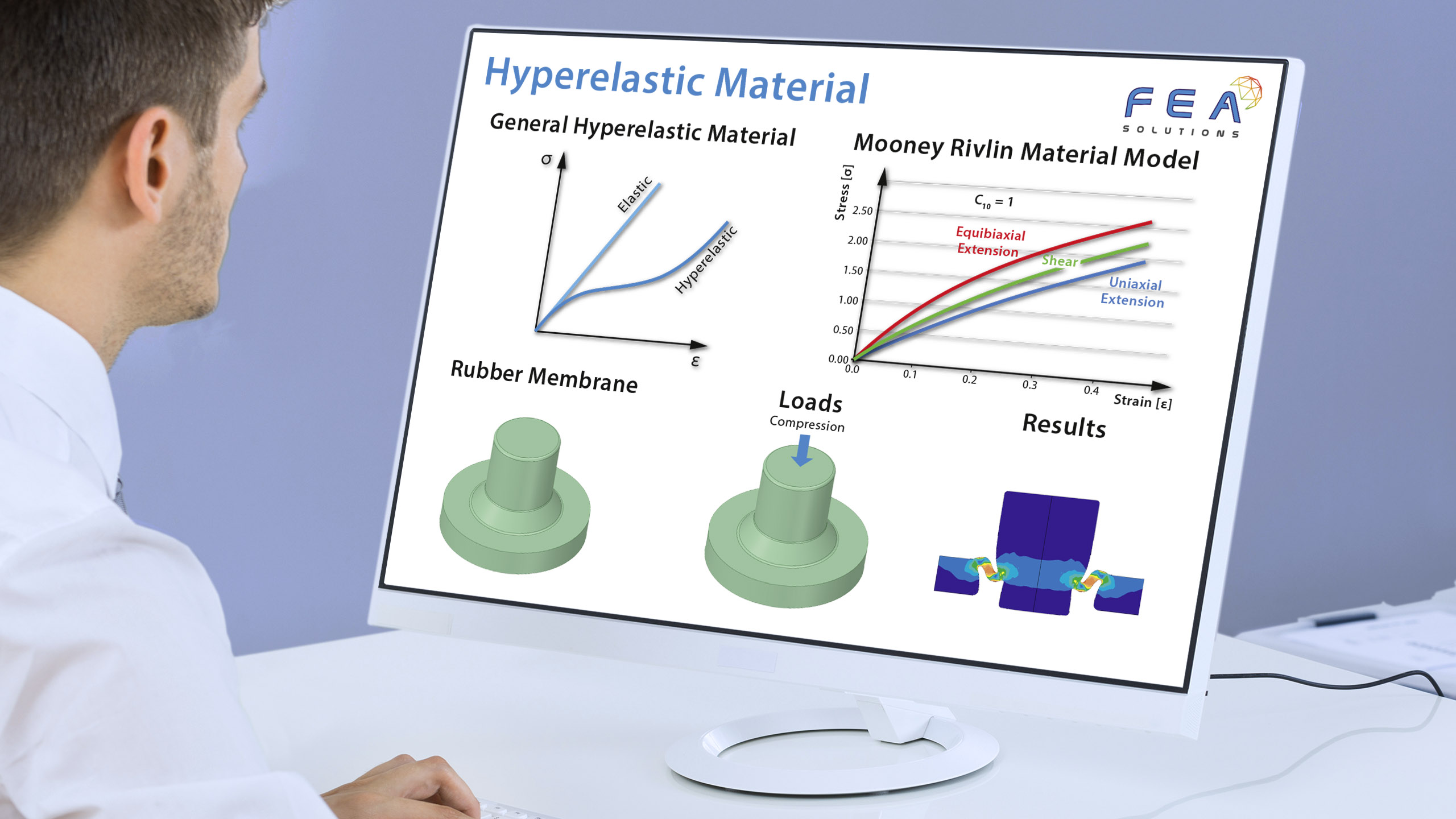
20 Jul Hyperelastic Material
The most common construction materials in mechanical engineering are metals and plastics. In the normal range of use, their mechanical behaviour can be mathematically described as linear-elastic https://fea-solutions.co.uk/elasticity-and-plasticity/.
Soft rubbers and foams are elastic as well, but their stress-strain curves (https://fea-solutions.co.uk/stress-strain-curves/) are highly non-linear. This is why different, so called hyperelastic material models have to be applied, such as:
- Mooney-Rivlin
- Neo-Hookean
- Blatz-Ko
- Ogden
- Arruda-Boyce
The choice of what model to be used depends on what material is being modelled, e.g. Mooney-Rivlin for natural rubber and Blatz-Ko for compressible polyurethane foam rubbers. Ultimately, the model with the closest curve-fit to the test data should be used in the FEA model.
All models use sets of equations to approximate the actual stress-strain curve of the material. These equations are controlled by coefficients which have to be derived from specimen test data (https://fea-solutions.co.uk/tensile-tests/). At least one set of stress-strain data is required for this curve fitting, e.g. results from a uniaxial compressive or tensile test. To increase the accuracy of the material behaviour, several sets of data, e.g. from uniaxial, biaxial and shear tests, are used for the curve fitting process.
Please call us today on +44 (0)1202 798991 for any engineering analysis requirements you might have.
